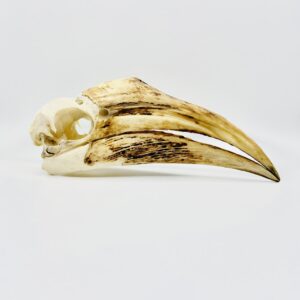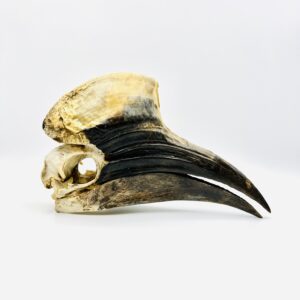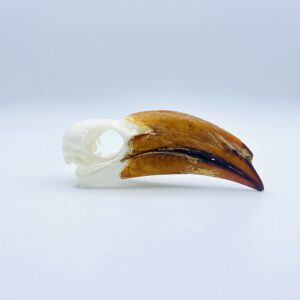The hornbill is a bird known for it’s big and odd look. It has a large, bent beak and a fancy casque on top, These amazing parts not only make the hornbill unique but also help it live. In this story, we learn about the hornbill’s special body.
Understanding the Hornbill’s Beak and Casque
The beak of the hornbill is very big and often bright in color, making the bird easy to spot. On top of this big mouth part is the casque, a empty and often big thing. Even though these parts might seem to make life hard for the bird, they are perfect for what it needs.
The beak is made from keratin—the same stuff that makes up human hair and nails—making it light but strong. The casque is also made of keratin but has a bone bottom, and its shape changes a lot between hornbill types. This difference is often used to tell species apart and helps in talking with other birds.
Multifunctional Adaptations
Communication:
The casque works like a speaker, making the bird’s calls louder. This is very helpful in thick forests, where sounds need to go far to reach other birds.
Heat Regulation:
Studies show the casque might help control body heat. Blood vessels in the empty part help get rid of extra heat, very important for hornbills in hot places.
Foraging Efficiency:
The beak’s strength and skill let hornbills pick fruit, catch bugs, and look for food. Its shape lets them get to food that might be hard to reach otherwise.
Social Signals:
The casque is also used in social talks, especially in finding a partner. Males often have bigger or brighter casques, which can show health and attract females.

Tracing the Evolutionary Path
The hornbill’s beak and casque come from millions of years of changing. Early hornbill family likely grew long beaks to use different living spaces, with the casque coming later as a do-it-all feature. Natural choice has made its variety even bigger, as birds with bigger casques often have more babies.
Fossil records show that these changes have deep roots in history, showing how nature can make form and function better.
Threats and Conservation Efforts
Even with their evolutionary benefits, hornbills face dangers. Losing homes because of cutting down trees and illegal hunting for their casques, especially the helmeted hornbill, are big threats. As birds that need old trees to live and eat, hornbills are very at risk from changes to their home.
Saving these birds is very important. Keeping their homes safe, making sure hunting laws are followed, and getting people involved in saving them are key steps to keep them alive.
Inspiration from Nature
The hornbill’s beak and casque are wonders of the natural world, showing the deep links between body, behavior, and home. They give us big lessons on how living things change and the careful balance of living places.
By helping save hornbills and where they live, we also keep the wide variety of life on our planet. These birds are not just wonders of change but also signs that we need to take care in looking after the natural world.









